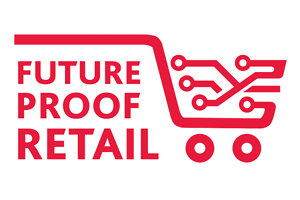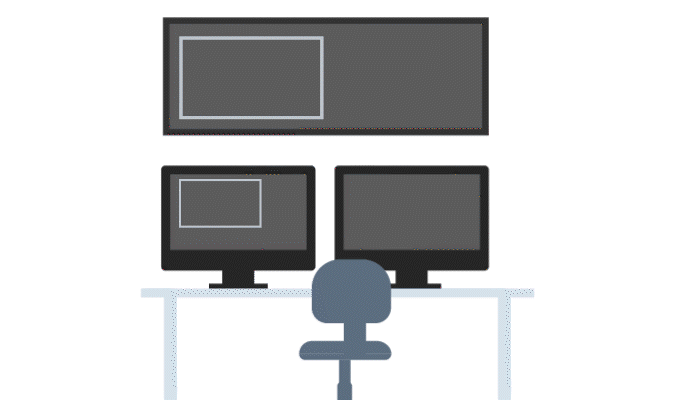Scenario Modeling

Predicting Future Threats isn’t a Guessing Game, it’s a Science
In the year 2052, you see a news report about a driverless vehicle loaded with boxes of the latest smartphones that departed its distribution center with the wrong routes accidentally programmed into its system. The phones arrived at their destination days late. In that same year, your friend starts a new remote job and is at home, patiently awaiting the arrival of the company laptop their employer shipped over two weeks ago via a third-party retailer.
Unfortunately, your friend isn’t going to get the laptop quite yet as it was sent by aerial drone and is stuck in a tree...far, far away.
Both of these scenarios – which may be more common in the not-so-distant future – illustrate how fragile global supply chains can be. Forecasting supply chain disruption is becoming harder for retailers as products are often bottlenecked in both common and hard-to-predict places. According to Supply Chain Dive, the industry continues to see “cascading disruptions crashing into carefully scheduled supply chains.”
Building resiliency into supply chains to avoid situations like these will be a hallmark of success for the retailer of the future.
future.
To future proof, retailers will increasingly look toward scenario planning and modeling to help them better predict disruptions. This will involve leaning heavily into technology to enhance operational visibility and identify where bottlenecks are likely to occur.
Retailers will need to think about worst case scenarios and plan their responses for those, too, because unfathomable disruptions – whether good or bad – are going to take place. These may include extreme weather events heightened by climate change, innovations in air and rail transportation, and risks posed by reliance on AI and robotics.
Findings from successful scenario modeling exercises enable retailers to see what might happen before it actually does.
Wading Through a World of ‘What Ifs’ with Scenario Modeling Technology
Scenario planning has to be multi-faceted. Retailers can’t just plan for one contingency – they must become adept at weighing the outcomes of multiple options and what-if scenarios to effectively guard against disruption and deliver on what is sure to be an acceleration of instant gratification to the consumer of the future.
Both today and in the year 2052, it will no longer be sufficient to only factor in primary risks. Primary risks can include supplier financial failures and/or a data breach of a single supplier. Secondary risks should also be accounted for. These are often regarded as scenarios less likely to take place, but harder to predict and manage, such as national health concerns, inclement weather events, geo-political incidents, and more – the COVID-19 pandemic is a prime example.
According to APQC research, 60% of organizations said they are integrating scenario modeling and analysis into planning processes to “a small or some extent.” Yet only 12% were doing it to a “great extent."
In the future, organizations will need to increase their capacity to build scenario modeling into their routine supply chain planning. The expectation will be that many more retailers are doing so in order to improve supply chain resiliency and inventory accuracy. Supply chain modeling can really only be successful with technology. Using scenario modeling software, retailers can run a variety of potential scenarios to quickly determine the best way to solve for a bottleneck, either when it happens or if it might. Armed with this information, retailers are able to visualize how a disruption would ripple through their supply chain and re-route operations to resolve it.
To increase agility and thrive in the future, retailers will need to use tools or solutions that incorporate a mix of AI, predictive analytics, and simulation techniques. But they don’t have to wait – retailers can start integrating and honing their use of these tools now.
Listen to our podcast episode, “How Better Technology & Data Support Your Supply Chain” to find out why investments like this are critical to operations.
Next Gen Industry Solutions are the Way of the Future, but They’re Here Now
Tools such as scenario planning, simulation, and machine learning (ML) can help retailers create a best-in-class digital environment. Industry 4.0, otherwise known as the Fourth Industrial Revolution, defines the current, highly digital era of manufacturing where analytics, AI, and new technologies all come together to transform supply chain operations. There are a host of Industry 4.0 solutions at a retailer’s disposal, all of which share a common goal: improve visibility into suppliers’ suppliers and customers’ customers. Retailers – as well as their manufacturing partners – look to data to help them prepare for tomorrow’s snafus.
One very important tool in the 4.0 toolbox is simulation technology. Simulation technology can help proactively assess and define the impact of everyday supply chain risks and, more importantly, bolster a company’s response to unforeseen events. Often used to model the impact of common situations – such as port closures or raw material deficits – simulation tools can also help model more extreme events that are possible in the future.
Take this rather extreme event for starters: the Earth’s magnetosphere is what keeps harmful elements or energy from space, such as cosmic rays, from penetrating the atmosphere. But, forces such as solar winds can disturb the magnetosphere, causing geomagnetic storms that can pierce Earth’s atmosphere. While this is possible and does happen now, imagine a future where the world sees more of this kind of “space weather” – impacts would be felt across plane navigation systems, telecom and communications infrastructure, and even power grids. Certainly, if planes and telecoms felt these effects, the world’s global supply chains would too. A second tool in the 4.0 toolbox that will become table stakes in the future is machine  learning.
learning.
Machine Learning combines structured data with unstructured data pulled from other places, such as social media feeds. The technology scans this data, and learns from it, to identify potential indicators or current events that might disrupt the supply chain. By knowing where the weaknesses lie and where threats are likely to come from, retailers of the future will use this information in real-time, to pull different levers. Levers may include switching suppliers or changing planned inventory orders to pivot ahead of impending disruption.
Real-time data and analytics built into supply chain technology will become table stakes and retailers will need to act on those findings without hesitation should disruption occur. This means using ML and other predictive analytics to go beyond the scope of data retailers have – usually first party data such as customer purchasing patterns or proprietary marketing information – and bring in external data that can signal potential threats or disruptions. Relevant external data that can inform supply chain strategy may include public health information and weather forecasts, according to Forbes.
Retailers that are future proofing now are seeing tangible benefits. APQC found “organizations that model and analyze scenarios to a greater extent” turn more inventory and get paid for it in a timelier fashion through accelerated cash-to-cash cycle times. Additional benefits often include the ability to:
- Build more robust contingency frameworks
- Identify weaknesses
- Make necessary changes to supplier networks
- Map continuity plans down to every detail
To mitigate supply chain risks now and in the future, as well as understand Industry 4.0 best practices, consider working with a third-party firm that can help.
Need a new supply chain model? Check out our “Ahead of Time Supply Chain Model” e-book and learn how it can help your company stay competitive.
How BDO Helps Retailers Manage Network Disruption – and ID Opportunity
At BDO, we know retailers must expect the unexpected.
Our team of professionals can help you prepare by establishing data-driven scenario modeling and planning exercises that you can use to better predict future issues – and opportunities. While pivoting fast is important now, it will be even more so in the future. Supply chain modeling and simulation, will be imperative for you to right-size inventory, generate efficiencies, and strengthen your fiscal position.
BDO’s Network Optimization service allows you to review your global supply chain networks end-to-end to mitigate risks, perform scenario simulations, identify areas for improvement, and build resilient systems that can stand up to disruption. BDO works with clients to review networks, understand customer expectations, and align capabilities with the specific needs of each retailer’s operating model and business strategy.
With a focus on maintaining business continuity while protecting profitability, our Global Value Chains Solutions team walks you and your organizational leaders through exercises to help everyone understand the supply chain’s strengths and vulnerabilities. From there, multiple scenarios can be analyzed based on current and potential operational, economic, environmental, and geopolitical risks, then model the impact of potential changes to chart the right action plan.
If one thing can be predicted, it’s that tomorrow’s retail landscape demands agility.
Find out how BDO’s Global Value Chain Solutions can help you thrive by reading our brochure.
Ready to understand what the future holds in store for your business?
BDO’s Retail and Consumer Products professionals are readily available to offer deep industry insight around supply chain management best practices to help you build resilience.